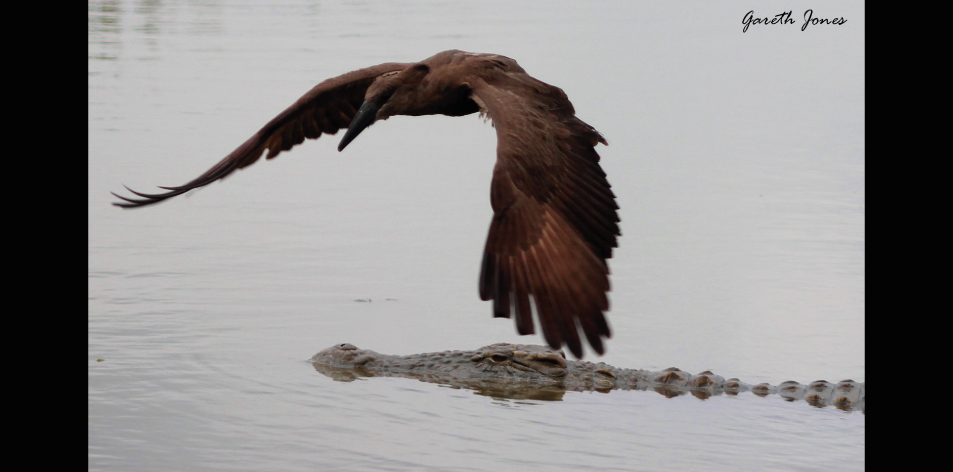
Unique Hamerkop Birds – Article by Gareth Jones
Unique Hamerkop Birds Of Nairobi National Park!
The recent rains have resulted in a very wet park, it is amazing how areas that were bone dry a month ago have now almost become marshes and even mini lakes. One thing about plentiful flow of water is that this seasonal change attracts other natural activity.
As I drove down the slippery muddy road to the stream crossing near the Hyena dam, I stopped as I noticed several hamerkop birds standing in the fast-flowing water. They stood motionless at first but then used their legs to probe the muddy water repeatedly, until suddenly, one of them would strike with lightning speed into the water, and emerge with a prize in its beak. Their prize ranged from small fish to tadpoles and other tasty aquatic creatures. I find it interesting how many hamerkops can be attracted to all gather at one point and hunt for food together. They have an almost prehistoric appearance with their uniquely shaped head in the form of a huge elongated beak and elongated rear tuft.
On another occasion after heavy rains, we found a hamerkop waiting patiently as a stream now had a strong flow of water cascading from underneath a bridge. After watching for a few minutes, the hamerkop suddenly lurched forward with lightning-like speed, plunging its head into the water. The hamerkop emerging triumphantly with a large fish wriggling in its beak and then proceeded to hold the fish in its elongated beak, to then bash the fish repeatedly against the rocks. After a short period of time, the fish stopped wriggling and was motionless. The Hamerkop then proceeded to swallow the entire fish in one gulp.
The Hamerkop (Scopus umbretta), also known as Hammerkopf, Hammerhead, Hammerhead Stork, or Anvilhead, is a medium-sized wading bird (56 cm long, weighing 470 g). The hamerkop occurs in Africa south of the Sahara, Madagascar, and coastal south-west Arabia. The hamerkop is mostly silent when alone, but is fairly vocal when in pairs or in groups. The only call it usually makes when alone is a flight-call, a shrill “nyip” or “kek”. In groups, vocalisations include a range of calls including cackles and nasal rattles. One highly social call is the “yip-purr” call. This call is only made in a social context, when at least three birds, but up to 20 are gathered in a flock. Birds start by giving a number of “yip” calls, eventually giving way to purring notes. This call is made with the neck extended and sometimes accompanied by wing flapping and becomes more vigorous when larger numbers of birds are present. Another common social behaviour is “false mounting” in which one bird stands on top of another and appears to mount it, but they do not copulate. It is thought that this type of behaviour is more social dominance related rather than sexual.
The shape of its head has a unique almost ancient prehistoric pterodactyl-like appearance with an elongated bill and crest at the back is reminiscent of a hammer, hence its name. The birds have a very unusual appearance and their name is very apt as the head is indeed shaped like a hammer!
Hamerkops breed in the Nairobi Park, and are good at making huge untidy nests, that are sometimes occupied by other species such as owls and eagles. Next time you visit the park take time to find a place where there is flowing water and look carefully for hamerkop birds they are very rewarding to watch!
The park is open daily from 06h00 to 19h00.
Sorry, the comment form is closed at this time.



Etienne
Very well written by an expert who clearly loves to observe and protect wildlife.